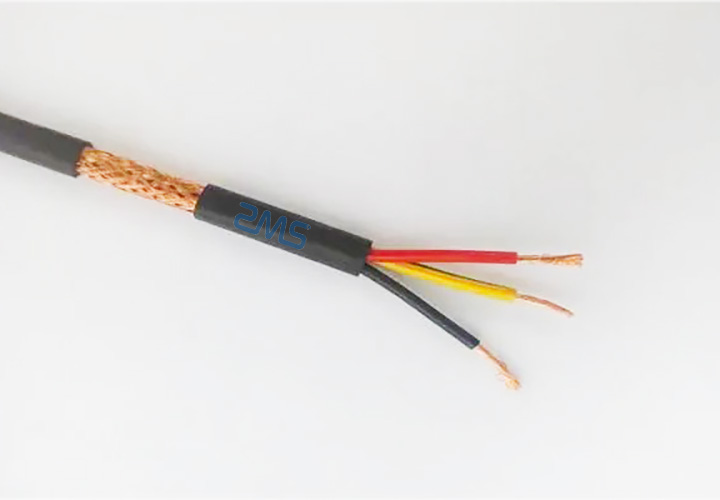A kabel kawalan terlindung biasanya digunakan sebagai talian sambungan alat elektrik.
Ia sesuai untuk talian sambungan instrumen elektrik dengan voltan berkadar AC 450/750V dan ke bawah dan talian penghantaran sistem kawalan automatik.
Ia mempunyai ciri-ciri yang sangat baik seperti rintangan minyak, rintangan air, rintangan haus, rintangan asid dan alkali, rintangan kepada pelbagai gas menghakis, rintangan penuaan, dan tidak mudah terbakar.

A kabel kawalan terlindung ialah kabel dengan lapisan jaring tembaga atau dawai logam yang dianyam di sekeliling satu atau lebih wayar. Lapisan dawai logam mesh ini boleh menghalang sambaran petir dan isyarat luaran tidak boleh mengganggunya.
Perisai juga menyediakan beberapa perlindungan kebocoran. Jika kabel rosak semasa digunakan dan bocor, perisai boleh mengarahkan arus bocor ke wayar tanah, menyediakan beberapa perlindungan keselamatan.
Peranan perisai dan wayar pembumian kabel kawalan berperisai ialah lapisan perisai dibahagikan kepada perisai dalaman dan perisai luaran.
Kedua-duanya adalah untuk membuat hubungan yang baik antara konduktor kabel dan lapisan penebat, dan antara lapisan penebat kabel dan lapisan pelindung dalam, untuk menghapuskan peningkatan kekuatan medan elektrik permukaan yang disebabkan oleh permukaan konduktor yang tidak licin dan lapisan pelindung dalam.
Ciri-ciri produk kabel kawalan terlindung.
(1) Jejari lenturan kabel yang dibenarkan: jejari lentur minimum kabel bukan perisai ialah 6 kali luar diameter daripada kabel. Kabel berpenebat fluoroplastik dan bersarung hendaklah sekurang-kurangnya 8 kali diameter luar kabel. Pita kuprum terlindung atau pita keluli kabel berperisai hendaklah sekurang-kurangnya 12 kali diameter luar kabel.
(2) Suhu operasi maksimum: polytetrafluoroethylene propylene (F46) penebat tidak boleh melebihi 200 ℃. Politetrafluoroetilena larut (PFA) penebat tidak boleh melebihi 260 ℃.
(3) Suhu persekitaran minimum. Sarung PVC: peletakan tetap -40 ℃, peletakan tidak tetap -15℃. Plastik fluorin dan sarung getah silikon: tetap meletakkan -60 ℃, peletakan tidak tetap -20 ℃. Pemasangan kabel dan suhu meletakkan tidak boleh lebih rendah daripada 0 ℃ (fluoroplastik, getah silikon dan kabel bersarung nitril tidak boleh lebih rendah daripada -25℃).


